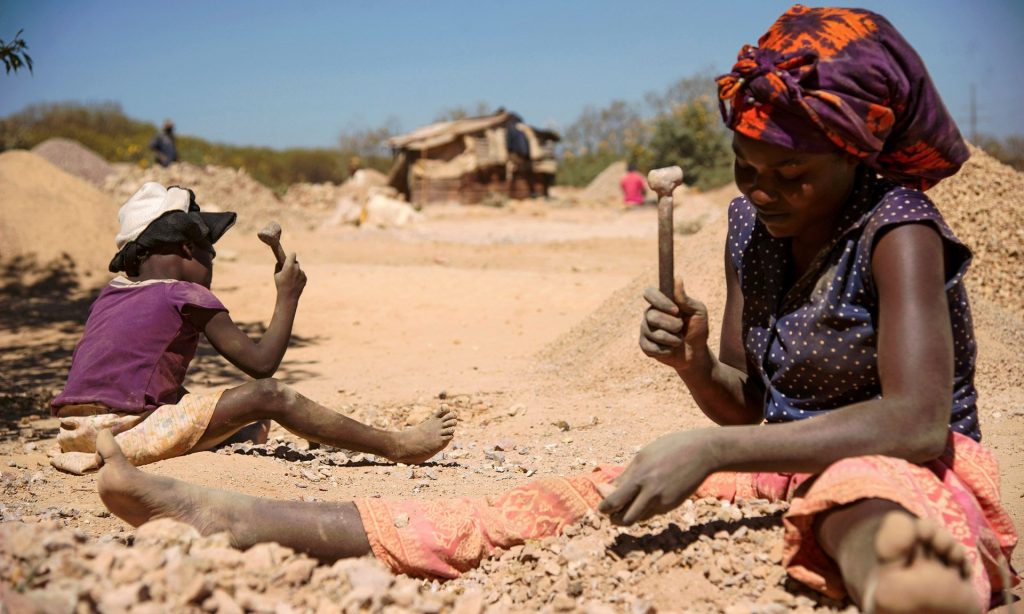Background
The International Labour Organization (ILO) launched the World Day Against Child Labour in 2002 to focus attention on the global extent of child labour and the action and efforts needed to eliminate it. Each year on 12 June, World Day brings together governments, employers and workers organizations, civil society, as well as millions of people from around the world to highlight the plight of child labourers and what can be done to help them.
The Sustainable Development Goals (SDGs), adopted by world leaders in 2015, include a renewed global commitment to ending child labour. Specifically, target 8.7 of the Sustainable Development Goals calls on the global community to: “Take immediate and effective measures to eradicate forced labour, end modern slavery and human trafficking and secure the prohibition and elimination of the worst forms of child labour, including recruitment and use of child soldiers, and by 2025 end child labour in all its forms.”
The issue of child labour

Today, throughout the world, around 218 million children work, many full-time. They do not go to school and have little or no time to play. Many do not receive proper nutrition or care. They are denied the chance to be children. More than half of them are exposed to the worst forms of child labour such as work in hazardous environments, slavery, or other forms of forced labour, illicit activities including drug trafficking and prostitution, as well as involvement in armed conflict.
Guided by the principles enshrined in ILO’s Minimum Age Convention No. 138 and the Worst Forms of Child Labour Convention No. 182, the ILO Programme on Child Labour (IPEC) works to achieve the effective abolition of child labour.
What is child labour?
Not all work done by children should be classified as child labour that is to be targeted for elimination. Children’s or adolescents’ participation in work that does not affect their health and personal development or interfere with their schooling, is generally regarded as being something positive. This includes activities such as helping their parents around the home, assisting in a family business or earning pocket money outside school hours and during school holidays. These kinds of activities contribute to children’s development and to the welfare of their families; they provide them with skills and experience, and help to prepare them to be productive members of society during their adult life.
Child labour is work carried out to the detriment and endangerment of a child, in violation of international law and national legislation. It either deprives children of schooling or requires them to assume the dual burden of schooling and work. Child labour to be eliminated is a subset of children in employment. It includes:
- All “unconditional” worst forms of child labour, such as slavery or practices similar to slavery, the use of a child for prostitution or for illicit activities;
- Work done by children under the minimum legal age for that type of work, as defined by national legislation in accordance with international standards.
The worst forms of child labour involves children being enslaved, separated from their families, exposed to serious hazards and illnesses and/or left to fend for themselves on the streets of large cities – often at a very early age. Whether or not particular forms of “work” can be called “child labour” depends on the child’s age, the type and hours of work performed, the conditions under which it is performed and the objectives pursued by individual countries. The answer varies from country to country, as well as among sectors within countries.
Labour standards
One of the major aims set for the International Labour Organization (ILO) at its founding in 1919 was the abolition of child labour. Historically, the ILO’s principal tool in pursuing the goal of effective abolition of child labour has been the adoption and supervision of labour standards that embody the concept of a minimum age for admission to employment or work. Furthermore, from 1919 onwards the principle that minimum age standards should be linked to schooling has been part of the ILO’s tradition in standard-setting in this area. Convention No. 138 provides that the minimum age for admission to employment shall not be less than the age of completion of compulsory schooling.
The ILO’s adoption of Convention No. 182 in 1999 consolidated the global consensus on child labour elimination. It provided much-needed focus without abandoning the overarching goal, expressed in Convention No. 138, of the effective abolition of child labour. Moreover, the concept of the worst forms helps set priorities and can be used as an entry point in tackling the mainstream child labour problem. The concept also helps to direct attention to the impact of work on children, as well as the work they perform.
Child labour that is proscribed under international law falls into three categories:
- The unconditional worst forms of child labour, which are internationally defined as slavery, trafficking, debt bondage and other forms of forced labour, forced recruitment of children for use in armed conflict, prostitution and pornography, and illicit activities.
- Labour performed by a child who is under the minimum age specified for that kind of work (as defined by national legislation, in accordance with accepted international standards), and that is thus likely to impede the child’s education and full development.
- Labour that jeopardizes the physical, mental or moral well-being of a child, either because of its nature or because of the conditions in which it is carried out, known as “hazardous work”.

